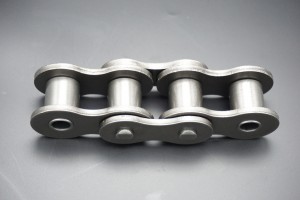When choosing a roller chain, it is important to understand its importance in various industries. Roller chains are widely used in automotive, agricultural, industrial, and even recreational applications. From conveyor systems to motorcycles, roller chains play a vital role in efficiently transmitting power. However, with a variety of options on the market, choosing the right roller chain can be a daunting task. In this comprehensive guide, we’ll walk you through the key factors to consider when choosing the perfect roller chain for your specific needs.
1. Know your application:
Before diving into the selection process, it is critical to define your application requirements. Determine operating conditions, load requirements and required chain size. Determine factors such as speed, temperature, environmental conditions, and potential corrosive agents. This understanding will help narrow down the options and select a roller chain with suitable properties.
2. Chain type and structure:
Roller chains are available in many types and constructions such as standard chain, heavy duty chain, double pitch chain and high strength chain. Each type has its specific purpose and function. Evaluate the specific needs of your application to determine the most suitable type of chain. For example, agricultural applications may require heavy-duty chains, while smaller conveyor systems may require standard roller chains.
3. Chain size and pitch:
Determining the correct chain size and pitch is critical for smooth operation and optimal power transfer. Chain size is usually indicated by a number representing the pitch in inches. Calculate the required size by considering factors such as motor power, speed, load and application capacity. Consulting a manufacturer’s catalog or chain selection guide can help you find the right size for your application.
4. Material selection and coating:
Choosing the right material and coating is critical given the specific environment in which the chain will operate. Standard roller chains are usually made of carbon steel, which provides sufficient strength for many applications. However, for corrosive or high temperature environments, stainless steel or nickel-plated chains are more suitable. Coatings such as Black-Oxide or Dacromet can enhance corrosion resistance.
5. Lubrication and maintenance:
Proper lubrication and regular maintenance are essential to ensure the longevity and optimum performance of your roller chain. Know the lubrication requirements of your chosen chain and plan your maintenance accordingly. Factors such as temperature, speed and load will affect the frequency of lubrication and maintenance.
6. Budget considerations:
While it’s important to prioritize quality and performance, it’s also worth considering your budget constraints. Research and compare prices from different suppliers to make an informed decision. However, always ensure that the selected roller chain meets the quality standards and requirements of your application.
Selecting the perfect roller chain requires understanding your application, selecting the correct type, size and material, and considering lubrication and maintenance requirements. Carefully selected roller chains ensure efficient power transmission and minimize downtime. By following the guidelines provided in this guide, you can confidently choose the ideal roller chain for your specific needs. Remember that when it comes to roller chains, precision and attention to detail can have a major impact on the overall performance and durability of the machine.
Post time: Jul-28-2023

